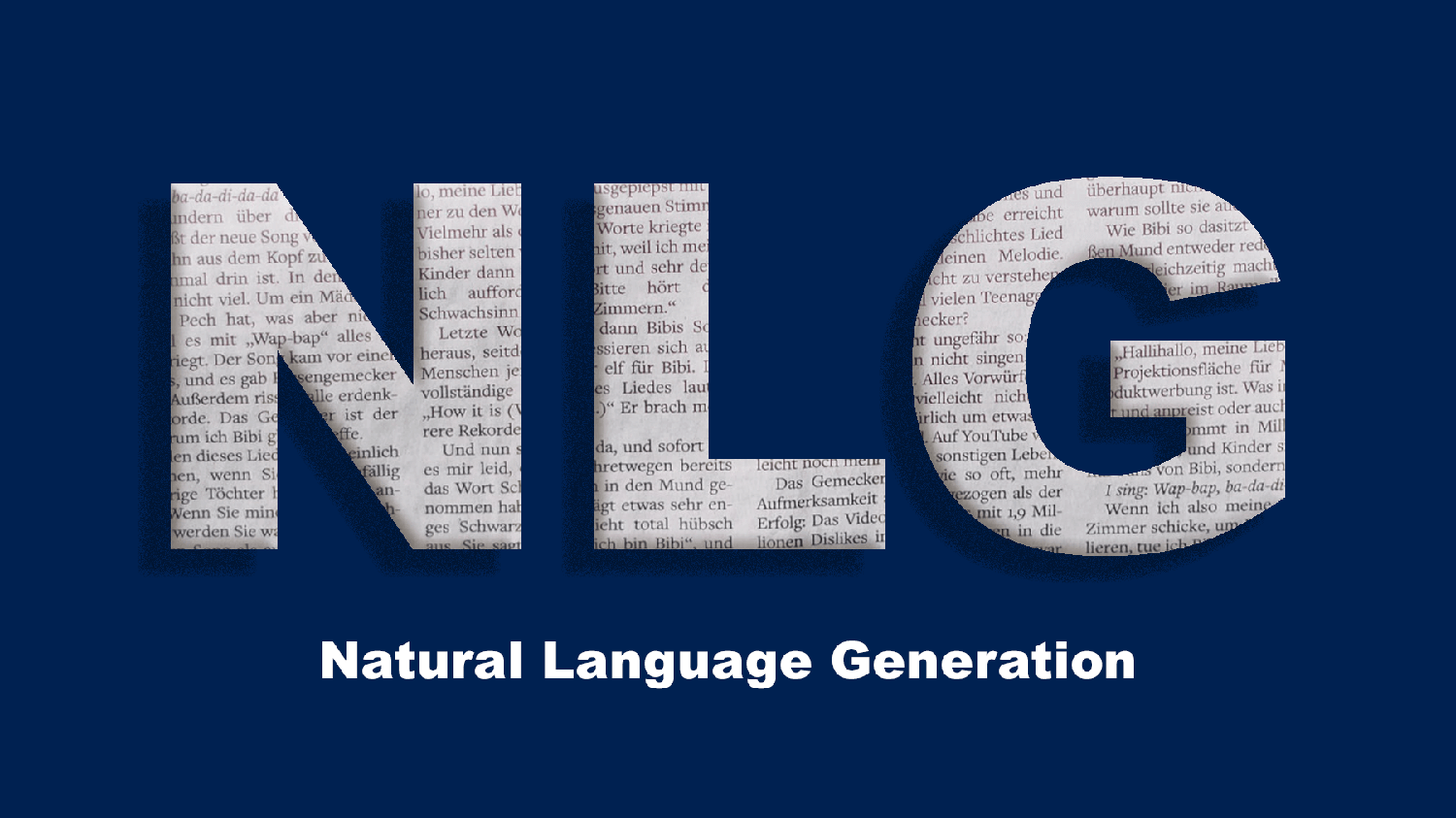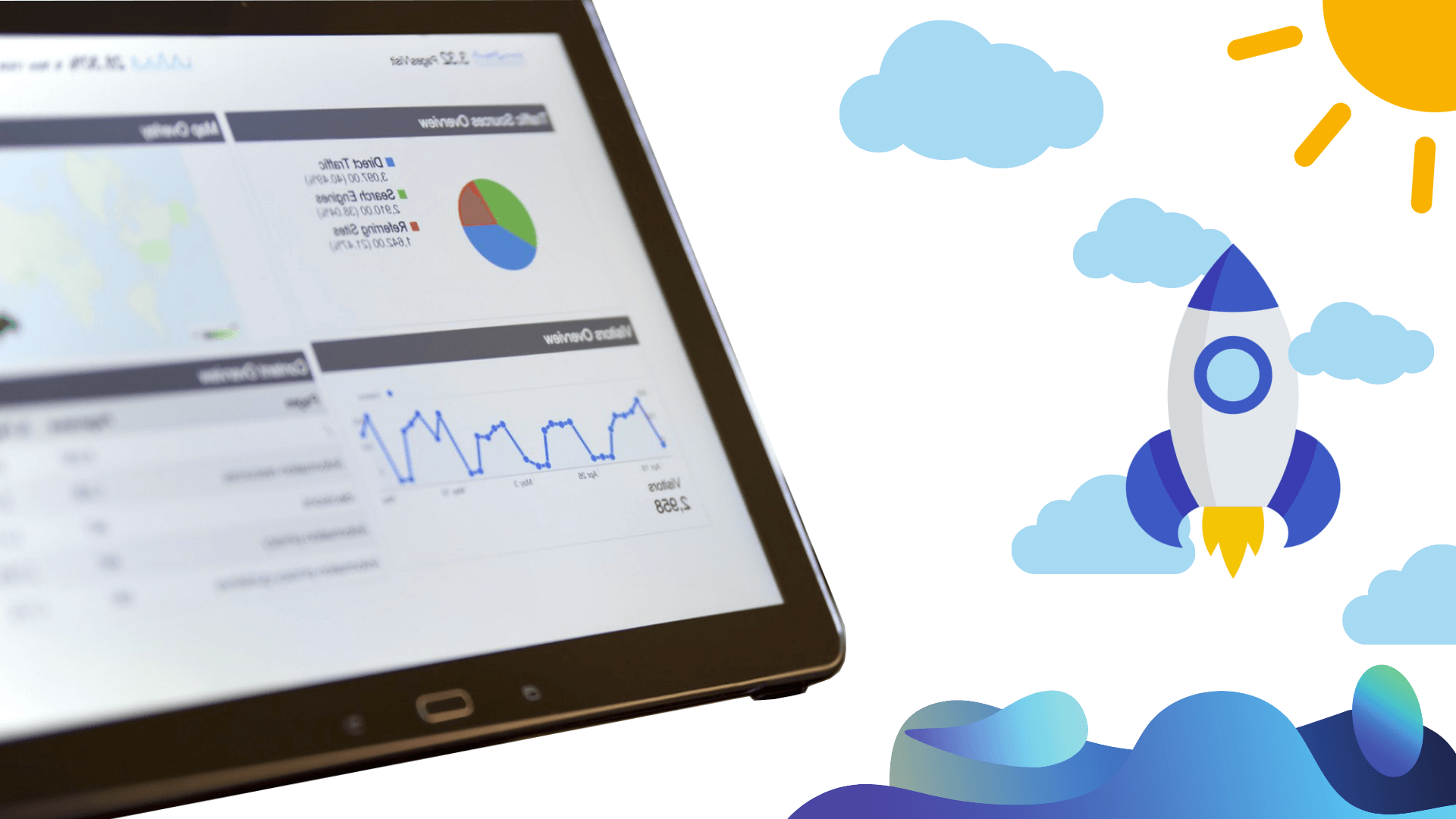What is Natural Language Generation (NLG)?

Introduction
In this blog post, you learn everything you need to know about the AI-powered technology of Natural Language Generation.
1. What is Natural Language Generation?
4. What are the benefits of using NLG?
5. Examples of NLG technology applications
6. Future uses for NLG and its unfolding impact on our lives
1. What is Natural Language Generation?
Natural Language Generation (NLG) is the process of using artificial intelligence to generate language for various purposes.
NLG systems are used in a variety of contexts, such as chatbots designed for customer service or automated question answering services like Siri and Alexa.
For a long time, these systems were not yet capable of mimicking human speech without conceptional guidelines provided by a user or programmer. Since the introduction of ChatGPT in 2022, they are now able to produce text and sentences which sound incredibly natural.
Most systems have underlying deep learning models to learn NLG techniques, such as:
- Text/document structuring - deciding the order and grouping of sentences in a generated text
- Lexicalization - add words, phrases or word patterns to a language's vocabulary to inflect words based on their grammatical use (tense, mood, person, number, case and gender)
- Referring expression generation - generate phrases to represent nouns (e.g. pronouns, definite noun phrases, spatial or temporal references)
- Linguistic realization - creation of the actual text from a syntactic representation
These are the most commonly used techniques.
2. How does it work?
In most cases, a single NLG technique is not sufficient to generate language. The following image illustrates how we can combine text structuring, lexicalization and linguistic expression generation to create a whole sentence:
.png)
This example shows how linguistic realization allows software to create text outputs from a JSON (data-interchange format) document.
In this case, text structuring places the adjective behind the noun instead of leading to a sentence such as "This is not a cool woman."
Finally, lexicalization is responsible for the correct flection of the determiner (which would be "These" for plural cases) and the verb.
Now, imagine if we switched the underlying data. We could switch up tenses, the amount of nouns and adjectives and much more, while the generated text would still be grammatically correct due to our NLG techniques.
Possible outputs might be:
- "These men didn't run quickly."
- "Your bookshelves were very heavy."
The advantage: grammatically correct text generations.
The prerequisite: available structured data.
3. What is NLG used for?
NLG can be used in many different ways. Based on our experience, the most business value can be generated by using NLG as:
- SEO content writer, e.g. product description generator
- Meta title and meta description generator
- Report automation (financial sector, medical sector and more)
There are many reasons to use NLG instead of copywriting resources.
You see, the age of manual content writing is over - at least when it comes to creating thousands of similar, yet unique texts.
What do we mean by "similar"?
Texts that are "similar" are structured and written using similar logic.
Manual content writing en masse is a very tedious process. Let's face it - it's not pleasurable at all, neither for employees nor for contracted content writers.
Our goal with NLG is to leverage the creativity and professionalism of content writers to design great text concepts. These concepts can then be implemented as text models to generate incredible amounts of content.
4. What are the benefits of using NLG?
Instead of creating single texts manually we can now create a concept for certain categories of texts, such a product families, identical types of reports, or texts with similar sentence and paragraph structures.
This is a colossal gain when it comes to scalable and extraordinarily fast generation of relevant content.
Who cares if you can use run-of-the-mill AI content writing software like Jarvis AI to generate cheap text results - if the results are not personalized, are missing relevant information or are even wrong?
With our software solution we enable true scalability because you can:
- structure your content on a conceptual level
- create highly personalized content for your target group
- generate tens of thousands of unique texts that vary based on your data, the context and SEO keywords
- deliver in multiple languages at the same time
And the best part?
You don't have to audit every single result since you - not a fully automated AI - control your text logic and structure.
At the end of the day, you need a high performing assistant to generate your ideas within seconds - not a software that thinks that it does your job better than you.
5. Examples of NLG technology
eCommerce Stores
Here the most common application areas are automated product descriptions, category descriptions and meta titles. Every part of a product page that is customized by a content management system (CMS) can be filled with automated texts.
This has many advantages, starting with obvious ones like faster text creation for new products, optimizing for keywords and avoiding duplicate texts.
But a particularly exciting one? Addressing the customer through a targeted user journey and personalized content leads to an average of 10% higher conversions.
Reporting
Report automation is the process of using software to generate reports based on data inputs. It's most often used in finance, banking and pharma fields where large volumes of reporting are required.
Using natural language generation, each report can be uniquely written with quality that is the same or even better than that of hand written reports.
Those who use report automation enjoy cost savings, increased accuracy and efficiency, and reduced time spent generating reports.
Our NLG software generates reports that garner a lot of readership, for example reports on company valuations or clinical studies.

Publishing
In the last few years, with advances in artificial intelligence and machine learning, we've seen an increase in the amount of automated sports coverage.
This can be expanded to weather reports, pollen count reports, crime reports, horoscopes, etc.

Especially template based NLG approaches find wide application in named areas. They equip you with:
- full control of your desired output, just as you define your narrative, tone and rule-based framework
- once the quality of a template based system is assured you will never need to review a single copy anymore
- it is highly scalable into different languages
- extending existing copy is as easy as adding new content and updating old copy
One of our preferred choices to get this job done is the NLG platform Textengine by Retresco which enables both us and our self-service customers to focus on the creative part of writing.
Their platform is capable of transforming structured data into text, making it easy for anyone to scale their copy writing processes. In countless languages.
6. Future uses for NLG and its unfolding impact on our lives
Currently, highly automated AI-based generation is not suitable for commercial scenarios - at least not for 100% end-to-end automation without human intervention.
Therefore, hybrid systems (such as Textengine) that combine rules and NLG techniques currently prevail in both quality and scalability because:
- hybrid systems grant more rule-based control over the generated output when it comes to targeting specific systems or audiences
- data might be unavailable or of poor availability for given cases or data subdomains
- commercial scenarios are very specific and require expert domain knowledge to create accurate results
Future developments might look at more situated language generation where environment, style and personality impact the generated text. This would enable chatbots to adapt to certain slang or a tone of voice that is suitable for their human vis-a-vis. Researches are also pouring a lot of focus into social media research where non-canonical language examples (slang, irony, etc.) are widely available. Non-canonical language poses an even bigger challenge when generating natural language.
Book a free AI discovery call
Your AI potential is just one call away.



